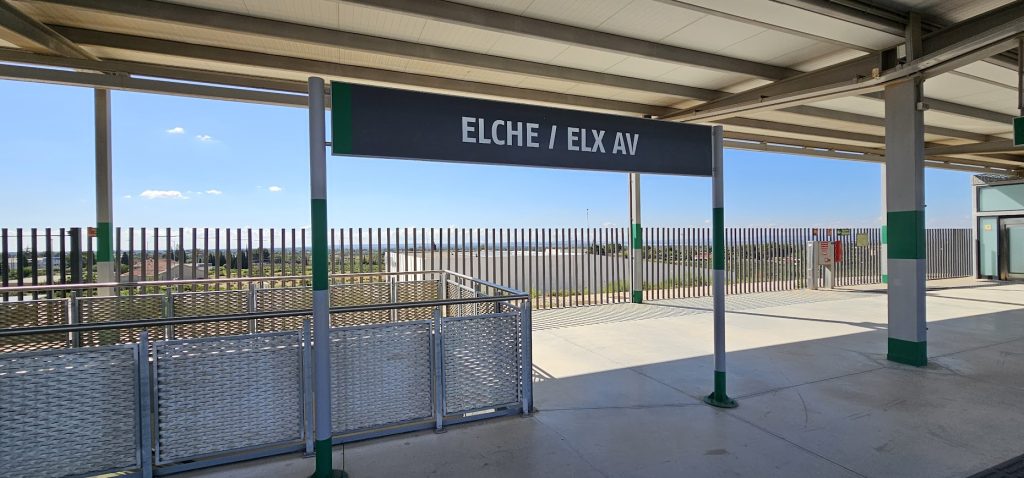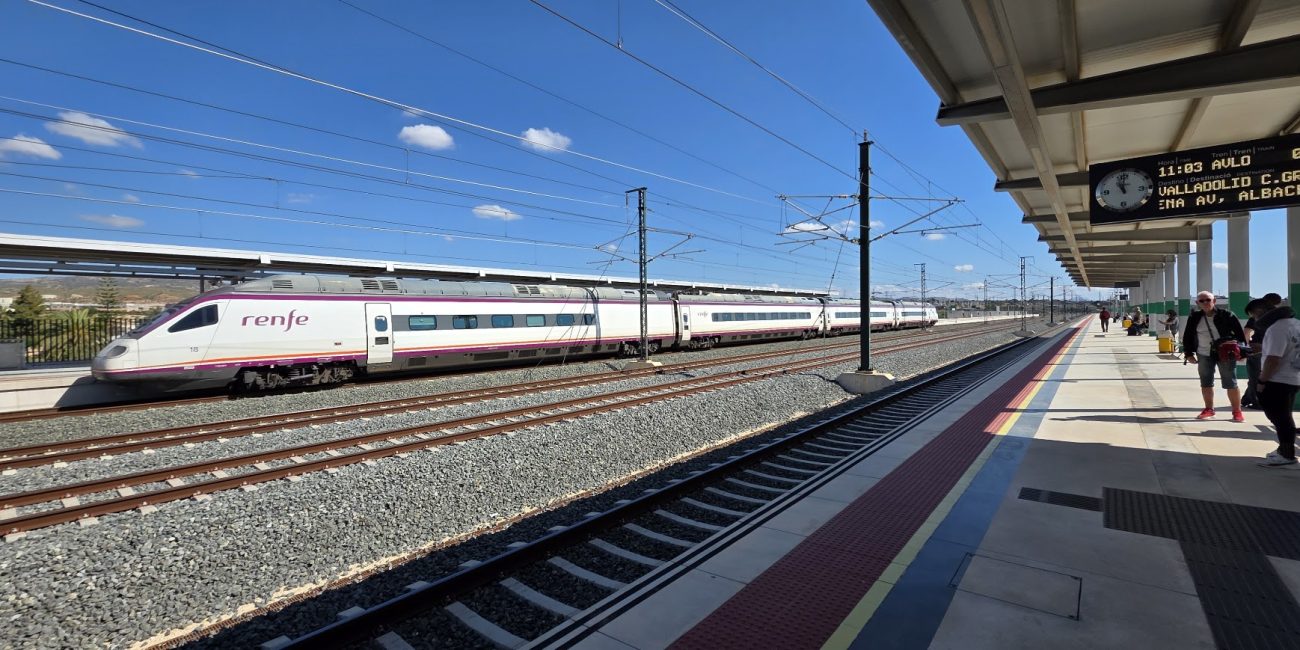Four years after the first Spanish High Speed (AVE) train stopped at Matola station and just over two years since the Madrid-Murcia line with a stop in Elche was put into operation, the Railway Infrastructure Manager (ADIF) is now considering expanding or building a new architectural element on the northeast side of the passenger building.
This is the contract awarded to the selected bidder, valued at somewhat more than €5 million, to plan the construction project for the bypass, which will connect the town centre to the station. This project also involves the connection of the platform, track, and energy for the Mediterranean Corridor’s standard gauge rail route between Alicante and San Isidro. The combined project of both projects means that the company’s work will take three years to complete because it is separated into two sections; in fact, the final payment will be delayed until 2028.
Passenger flow
The first stage, lasting 24 months, includes work on the Torrellano-Elche section, which must include a new double-track platform from the district’s station to Elche-Mercancías; work on the Elche tunnel, which must be electrified; work on the tunnel exit section to the Elche AV station; the station itself, considering how to resolve the double flow of passengers expected when the bypass is built; and finally, the bypass from the Elche Mercancías station to El Realengo. This necessitates a change in track gauge and electrification, the decommissioning of the Crevillent station, and the connection to San Isidro. The second phase, which will last 12 months, will include reports, clarifications, and steps to address any issues mentioned in phase 1. Technical assistance will also be required for processing, reports on the redesign of works, and visits.
“Limited space”
Adif requested that the aspiring companies have experts behind the project, which was considered when selecting the winner, because, referring to Elche AVE, “the station platform has limited space, which greatly limits the possibilities for modifying the station so that it can meet the increased demand for rail services.” The final track arrangement must be changed to fit the available space, and if necessary, the platform should be extended at those spots where it is required for technical or operational reasons.”

The study advocates for a station that separates both passenger flows, which is critical because, as it admits, “the passenger building was originally designed solely for long-distance traffic.” It discusses not only the building itself, but also everything involved in keeping the tracks from overlapping, including the tunnel beneath them that allows passengers to access and exit the platforms. Adif acknowledges that it overlooked future considerations when presenting Elche AV, despite the project’s insistence on foresight. “It must ensure the definition of all its aspects (the project) required for the proper operation of the station in its broadest meaning, both in its final situation and in any provisional conditions that may occur while the work progresses. In addition, it will consider future demand.
Underpass

The document on the existing subway, which currently appears to be too large for the station’s traffic, notes that if it is not feasible to maintain it, “the construction of a new one to replace it, suitable for future circumstances, will be studied.” The study must consider the station’s overall operation and conduct passenger flow simulations, “which will allow us to understand the times and the way in which they move between the different spaces, transfer between Long Distance and Commuter Trains, leave the station, and disperse.” Since its inception, the station has gained passengers and routes that connect with half of Spain, while execution times are still being monitored.









No Comment! Be the first one.